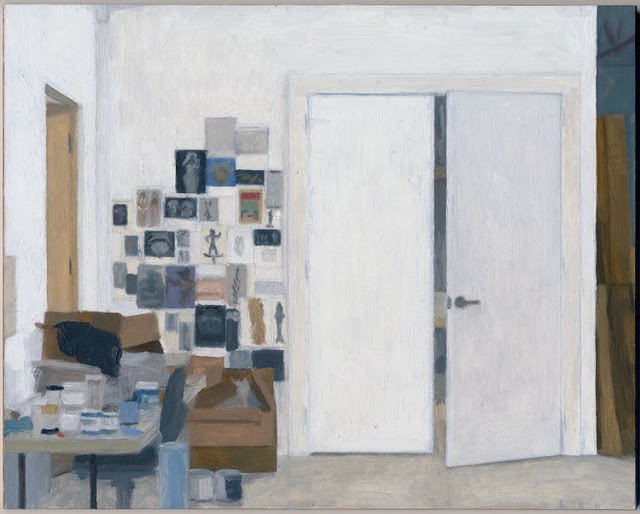Eleanor Ray's Serene, Everyday Geometry
Call it Mondrian meets Morandi. When Mondrian boiled everything down to the grid, he employed bright, even primary colors, and his goal to create a sense of kinetic energy, that "boogie-woogie" feeling. Stuart Davis's jazzy geometrics did the same. What Eleanor Ray does is to work with the grids of everyday life, but to do so in a tonal register similar to Morandi, whose serene still-lifes featuring the same set of bottles and jars have only grown in power and popularity over the years.
I think tone is underrated as an aesthetic value, with too much focus on meaning and the like. A long time ago on this blog I did a post called Tone Is Everything. What I meant is that's it's tone that makes you want to stick with a work of art, to return to it, to marinate in it. When I ask myself what music I want to listen to next, I'm really asking what tone or overall aesthetic will appeal to me at that moment. When I want something that is mellow but not stupid, light but not vapid, I might turn to someone like Jackson Browne or James Taylor, or maybe some cool jazz like Chet Baker or modal jazz in the lineage of Miles' Kind of Blue. In fact, it's the overall tone that keeps Kind of Blue in its position as one of the most popular jazz recordings. The soloing is nothing if not complex, but it all goes down within the context of a very specific relaxed and enveloping vibe.
So Eleanor Ray is working that calm yet complex terrain, I think, which is no small part of her success. She makes small-scaled, intelligent work that is consummately inviting. Dare to be accessible! So, yes, she's got her thing. I like loud and noisy music and art too, but someone else can do that, right? In terms of content, she is often on the inside looking out, just like most of us, or me anyway. She shows how the grids in our lives need not be straitjackets but rather can provide inviting framing mechanisms for dealing with the complexity of the world beyond our control. In one sense, it occurs to me that curves are more spiritually advanced than right angles. But the thought of living in a round house without corners seems unattractive to me, as does the thought of living in rooms that don't feature right angles. Eleanor Ray's right angles are loving, spiritually infused ones, the ones that make the world a wondrous place.



Comments
Post a Comment